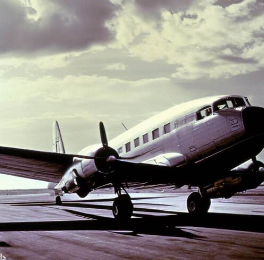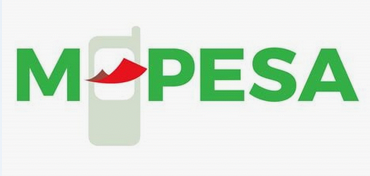How creating experiences for underserved markets can be a key innovation strategy

GUEST POST from John Bessant
It’s summertime, at least here in the northern hemisphere and chances are that August is a holiday month. Which might well see you sitting somewhere and watching an exotic sunset, glass of something suitably refreshing in your hand. As you see that golden disc slip below the horizon and the wonderful display of red shifting colour begins to settle towards nightfall you might spare a thought for the memory of Tom Gullick who died this month. Because for many of us jetting away to our exotic location might not be happening were it not for his innovation efforts….
An avid bird spotter (he held the record for the most birds (over 9000) spotted by an individual) he was a bit of a Don Quixote figure, not least because he took up residence in La Mancha in Spain and pursued a conservationist crusade during his later years, saving at least one species of duck from extinction.
But he has another claim to fame — as one of the founding fathers of the low-cost travel experience. His bird-watching abilities gave him good observational skills and led him to spot an opportunity in classic entrepreneurial fashion — and then to go after it with a passion.
Working for a hundred year old firm of shipping brokers (Clarksons) he was given the task one day of getting people to Brussels to attend the World Fair Expo58. The entrepreneur in him rose to the challenge; he chartered a DC-3 plane to fly from Southend airport and arranged coaches, refreshments and even a tour guide, offering the entire package for £6. It worked well but his interest was piqued when he found out that another entrepreneurial member of the party had seen his offer and bought a sheaf of tickets, reselling them via an advert placed in the London ‘Evening Standard’ newspaper for £8! That was the trigger.

He managed to persuade his rather conservative employers to set up a travel subsidiary and became a pioneer of what became known as package holidays. Coming after years of post-war austerity his offer of trips to places abroad, whether the tourist sights of Belgium or Switzerland or the beaches of the Costa del Sol was avidly taken up. He pitched his offer to those previously underserved by the travel industry, offering experiences to those whose normal holidays might be spent in a beach hut at Bridlington. As he later explained in an interview,
“My happiest moment was standing at Rotterdam airport at the end of the day, watching the buses return from the bulbfields with the Dakota DC-3s lined up waiting to take our customers home. They were so happy because they had never believed they could afford to go abroad.”
Within a decade Clarksons had become one of the major players in a market which was exploding with pent-up demand. They offered a wide variety of experiences, from wine tours in France to trips along the Norwegian fjords; their sunshine holiday business was particularly popular , built on a fixed price all inclusive model delivered at low cost. His skills as negotiator helped deliver this — he could guarantee to fill hotels or aircraft if the supplier was prepared to offer competitive pricing.
Other companies joined the party and it wasn’t just the British who were travelling; increasingly horizons for European tourists were extending. Inevitably this brought a highly competitive edge to the market and required a business strategy based on investing in being able to deliver experiences by assembling the different elements and engineering them down to a package with a thin profit margin. He found increasing difficulty in explaining this to a company whose core business in ship-broking operated on very different models and so he finally left in 1972, retiring to Spain to begin his second career as a bird watcher /conservationist.
He got out just in time; by 1974 cut-throat competition from the growing number of players, a devalued UK pound and the emerging oil crisis with its pressure on fuel costs forced Clarksons into collapse in the middle of the summer tourist season.

The business model hadn’t failed — but it did need development and fast learning. All the pieces were there — interesting destinations, hotels, buses, aircraft and so on. The difference was in the market — classically growing at the edges of an existing one. But bringing this new business model to life required reframing how both product and process worked. Margins were thin and so new approaches were needed to booking and operations, while delivering the package experience required a new profession — the tour rep — who would need enormous versatility (dealing with everything from entertainment, health and safety, administration, currency exchange, etc.) while all the while smiling for the customers!
It wasn’t disruptive innovation — yet. What was going on was learning to serve a very different market with a new experience based on lower cost. But the learning about how that model might work sowed the seeds for what later did become a revolution which transformed the travel industry. The evidence for this is with us today. Low-cost airlines like Ryanair, Wizz or Easyjet have revolutionised the world of short-haul travel and although they faced heavy setbacks during the Covid-19 crisis they are now returning to profitability and popularity.

But the package holiday was not a new idea. Some 100 years previously a certain Thomas Cook was looking for a new offering for his growing travel business. Originally a printer and Baptist lay preacher he’d built his original business organising day trips; his first didn’t run too far (the relatively short hop from his home town of Leicester to nearby Loughborough) but in 1841 it gave birth to his travel business. Four years later and he’d clearly tapped into a rich potential market; his trip to the seaside at Liverpool was booked by 1200 people and he had to repeat it two weeks later for another 800 happy travellers.
Cook began to extend his trips across the Channel and by 1863 had seen the possibilities of offering people the opportunity to see far-off places and sights (like the famous Mount Rigi in Switzerland) for themselves. In doing so he pioneered what effectively became the package tour, organizing not only the travel (by road, rail, boat, even mules) and accommodation but also providing guides to help conduct the tour.
Mind you his tour was not for the faint-hearted. In her diaries an intrepid young woman, Jemima Morrell described in detail a world of 4am alarm calls, 20-mile hikes and other challenges — not least of which was also being able to dress for dinner every evening in the hotels in which she stayed! But she clearly felt it was worth it for the experience.
“The days spent on foot, or by the sides of mules, afford the greatest satisfaction …..It was then that, away from the life of the city, we were taken into the midst of the great wonders of nature and seemed to leave the fashion of this world at a distance … It was an entire change; the usual routine of life was gone. All memory of times and seasons faded away and we lived only in the enjoyment of the present.”
Thomas Cook’s ideas changed several things. From the point of view of Switzerland it helped transform a poor rural economy into a travel destination; today the Swiss Alps are one of the world’s most popular tourist destinations.
Cook also created a system-level innovation, much as Henry Ford was to do with the motor car fifty years later. Putting together a successful package tour involves much more than simply arranging travel and tickets. Cook pioneered the complex logistics, arranged for integration of different travel and accommodation options, provided a system of coupons (the forerunners of traveller’s cheques) to help pay for goods and services, developed a network of guides and other support staff and printed brochures not only as sales tools but as a way of engaging customers in imagining and dreaming about the journey they were about to embark upon. In doing so he can rightly be considered one of the founding fathers of an industry which today is worth over $7 trillion.
What he pioneered was ‘experience innovation’ — not simply offering travel but a whole new experience. In his case it was the wonders of the Grand Tour brought to everyone, in Clarksons’ case it was the joys of sun-drenched beaches, endless sangria and exotic food to try.

‘Position innovation’ of this kind begins with a reframing of possibilities — classic entrepreneurial territory. Tom Gullick saw an opportunity in meeting needs for a different group and packaging the experience up rather than leaving them to select their own. Travel agents were involved at the time because the infrastructure for booking wasn’t developed; the later low cost revolution saw increasing disintermediation and the emergence of platform models where you buy your travel, car hire, hotel, parking, currency, anything else you might want, all of it via a one stop online platform.
But in order to meet the needs of an unserved or underserved market requires close interaction and fast learning with that market. By definition it doesn’t exist yet in developed form so the process of co-evolving with it is going to involve a bumpy ride. The Clarkson experience was one of experimentation and building fast learning — from the prototype of Expo58 to the slick summer exodus managed in the heydays of the 1970s.
This is challenging but it also means that position innovation can provide a valuable learning laboratory for those wanting to get out of the box which serving the mainstream market can sometimes represent.
A good example is the fascination (and huge market potential) of digital wallets and mobile money. We’re still (well I am) excited by the fact that we can now use our phones to pay for a whole raft of goods and services and the potential is of course huge. Given an accelerating shove by Covid-19 the shift towards a cashless society has been rapid. Not for nothing is Elon Musk trying to create a new brand X (why do I think of washing powder when I hear that?!!!) and give the bird the bird? It’s got little to do with messaging and everything to do with trying to emulate the power of the WeChat platform in China which is an ‘everything app.’ But at its heart it is about mobile money — so much so that even beggars in China have QR codes so that you can support them with a click of your phone button.

So the cutting edge of innovation — right? Not necessarily. If you live in East Africa you might greet a lot of this with a yawn, it’s nothing special or new. Because M-PESA has been enabling this for over a decade, so much so that the mobile money app running on any phone now accounts for over 50% of all GDP transactions in Kenya and is widely used across much of Africa. What is M-PESA? Essentially it’s a mobile money app which was developed originally as a joint venture between Safaricom (Vodafone’s South African subsidiary) and the UK Department for International Development. The name comes from the Swahili pesa meaning money and the original idea began as a development aid project to enable microfinance repayments. Launched in 2007 it is now used by close to 20 million people and the system processes more payments than Western Union does across its entire global network.
What’s gone on, of course, is a classic piece of position innovation where learning has driven improvements and developments, not only to serve the new market but in products and processes to enable it to grow. And it’s created a platform economy, bringing in shops, transport, government services, etc. — and all of this with the innovative support of the central bank. It’s a model which has grown beyond Kenya to have world-wide impact. For example a valuable spin-off has been the use of this technology to enable more efficient aid distribution to help cope with humanitarian crises.
So position innovation matters and should form a key plank in our innovation strategy. It’s at the heart of the innovator’s dilemma — the emergence of innovation at the fringes of your core market was the threat so potently identified by Clayton Christensen. How you deal with that strategic challenge is still a major question — but making sure you spot emerging position innovation early at least buys you time to think through a strategic response.
And for entrepreneurs looking for new opportunities the challenge is simple — spot a market before it exists and then grow it! Not an easy thing to do when you can’t analyse or run focus groups about it. But — as Thomas Cook and later on Tom Gullick found out, being prepared to experiment can pay off handsomely. Which is why it might be worth raising a holiday glass in their direction to remind ourselves of the challenge…

You can find a podcast version of this here and a video version here
And if you’d like to learn with me take a look at my online course here
![]() Sign up here to join 17,000+ leaders getting Human-Centered Change & Innovation Weekly delivered to their inbox every week.
Sign up here to join 17,000+ leaders getting Human-Centered Change & Innovation Weekly delivered to their inbox every week.